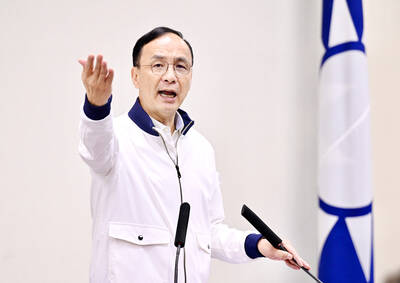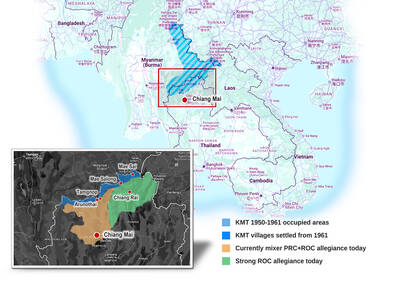Arthur Blessitt has walked across every nation, territory and island group on the planet — 61,319km, enough to hold the Guinness book world record, although the record keeper doesn’t really have a category for what Blessitt did.
He walked all that way between 1969 and 2009, with a heavy wooden cross resting on his shoulder.
A small wheel attached to the bottom of the cross helped Blessitt roll it across seven continents, through Middle Eastern war zones, over Antarctic ice and through South American jungles.
Of all the places Blessitt has been, he was probably most surprised to find himself on a red carpet in front of Grauman’s Chinese Theatre in Hollywood last month for the premiere of the Matthew Crouch documentary about his journey, called The Cross.
“That’s as much a miracle as anything,” said Blessitt, 68.
However, Blessitt’s own photo collection contradicts the notion that celebrity was an unlikely destination.
In one photograph Blessitt prays next to Palestinian leader Yasser Arafat. In it, Arafat, a Muslim, smiles and clutches a small wooden cross, a gift from Blessitt.
Blessitt is also shown exchanging pleasantries with Pope John Paul II, trudging through violence-torn Northern Ireland with an onlooker, the Reverend Billy Graham.
Blessitt was arrested in a mob scene in Spain, where, he said, other ministers, priests and ordinary citizens rallied to hold his cross aloft after his forced removal from the Plaza Major in Madrid.
He and his cross appear in photographs with smiling soldiers, some flashing peace signs, from Lebanon to Israel.
“Sometimes you walk into a country and they put you in jail,” Blessitt said. “Sometimes you meet the president.”
He never arranged visits with famous people, he said, and yet, the famous flocked to him.
Blessitt has prayed with rock legends Janis Joplin, Jimi Hendrix and Bob Dylan. He also has prayed with little known, remote tribesmen.
“I don’t follow Christ because of anything I get from it,” Blessitt said. “I love God and I love people.”
He was nearly always accepted and often offered warm hospitality, wherever he went with his cross.
He was sometimes ignored. He also experienced ridicule and menace.
His closest call perhaps came in Nicaragua, where militants held guns to his head. He recalls frantically clawing at a box of Bibles so he could die with the Good Book in his hand. Then he decided to pass them out, but when he looked up, the soldiers were prostrate on the ground. Then they jumped up and ran away, as if terrified, he said.
“That was a miracle,” Blessitt allowed. He doesn’t know exactly what happened. “God chose to preserve me.”
The logistics of marching across the world with a giant wood and metal cross are tedious and mind-boggling, from checking it, tucked into a ski bag, at countless airports, to hauling it in the two Land Rovers worn out by the Blessitt family.
Checkpoints and roadblocks in militarized zones were, of course, problematic — try doing the paperwork for a visit to North Korea or Saudi Arabia, when it was closed to tourists, and where activity by Christian churches is forbidden. He walked the countries of the former Soviet Union in the weeks after its collapse.
If you ask Blessitt how he sees himself, he says, “All I’ve been is God’s donkey.” He is “obedient.”
Blessitt’s journey started in the farm fields of Mississippi, where his father had him lug water to workers. He said he heard Jesus’ voice guiding him in the fields, sometimes, it seemed, erratically, but always “teaching me to listen to him.”
Later, after Blessitt started a ministry for hippies, runaways, hookers and addicts on Los Angeles’ Sunset Strip, he heard the voice tell him to make a cross.
“I built it in 1968 and did short walks along Sunset Strip in West Hollywood — 100 yards [91m], 200 yards,” Blessitt said.
A BBC reporter who interviewed him there tossed out this comment: “You ought to try this in Northern Ireland.”
So he did, ignoring threats on his life as he passed through the sectarian violence there.
“It wasn’t until 1988 I felt ... I should give my life to carry the cross to every nation,” Blessitt said. “I did not choose to carry the cross. I felt that Jesus called me.”
His wife, Denise, has been to 290 countries with him and spent an anniversary in Siberia without complaint. His children by an earlier marriage have walked alongside him, at times in grave danger, carrying their own smaller crosses.
“I just accepted it,” said his son Joel, now a minister at Denver’s Heritage Christian Center. “I thought everybody’s dad carried a cross.”
If his six children, now aged 29 to 45, ever felt abused, they don’t say so. All but one, who is in Norway, have moved to the Denver area to be near their father, who came here in 2005. He and Denise also have adopted a daughter, Sophia, who is 5.
Blessitt said he accepted food and lodging in foreign countries, but not donations. He didn’t hold special fundraisers, but supporters have helped finance his travels.
He has formed a nonprofit organization from which he takes an annual salary of about US$48,000, and he accepts an occasional speaking engagement. His book, The Cross, came out last year.
And while Blessitt set foot last year on his last island group, Zanzibar in the Indian Ocean, the mission is not over.
An attempt to launch a piece of his cross into space with a satellite failed when the rocket blew up.
He will try again, attaching it to another satellite with a polar orbit, so the whole world can spin under a piece of his cross.
He’s not yet through “wandering around the world with wood. People in Darfur, people in Beverly Hills or on Wall Street, they need hope.”

President William Lai (賴清德) yesterday delivered an address marking the first anniversary of his presidency. In the speech, Lai affirmed Taiwan’s global role in technology, trade and security. He announced economic and national security initiatives, and emphasized democratic values and cross-party cooperation. The following is the full text of his speech: Yesterday, outside of Beida Elementary School in New Taipei City’s Sanxia District (三峽), there was a major traffic accident that, sadly, claimed several lives and resulted in multiple injuries. The Executive Yuan immediately formed a task force, and last night I personally visited the victims in hospital. Central government agencies and the

Australia’s ABC last week published a piece on the recall campaign. The article emphasized the divisions in Taiwanese society and blamed the recall for worsening them. It quotes a supporter of the Taiwan People’s Party (TPP) as saying “I’m 43 years old, born and raised here, and I’ve never seen the country this divided in my entire life.” Apparently, as an adult, she slept through the post-election violence in 2000 and 2004 by the Chinese Nationalist Party (KMT), the veiled coup threats by the military when Chen Shui-bian (陳水扁) became president, the 2006 Red Shirt protests against him ginned up by

As with most of northern Thailand’s Chinese Nationalist Party (KMT) settlements, the village of Arunothai was only given a Thai name once the Thai government began in the 1970s to assert control over the border region and initiate a decades-long process of political integration. The village’s original name, bestowed by its Yunnanese founders when they first settled the valley in the late 1960s, was a Chinese name, Dagudi (大谷地), which literally translates as “a place for threshing rice.” At that time, these village founders did not know how permanent their settlement would be. Most of Arunothai’s first generation were soldiers

Among Thailand’s Chinese Nationalist Party (KMT) villages, a certain rivalry exists between Arunothai, the largest of these villages, and Mae Salong, which is currently the most prosperous. Historically, the rivalry stems from a split in KMT military factions in the early 1960s, which divided command and opium territories after Chiang Kai-shek (蔣介石) cut off open support in 1961 due to international pressure (see part two, “The KMT opium lords of the Golden Triangle,” on May 20). But today this rivalry manifests as a different kind of split, with Arunothai leading a pro-China faction and Mae Salong staunchly aligned to Taiwan.